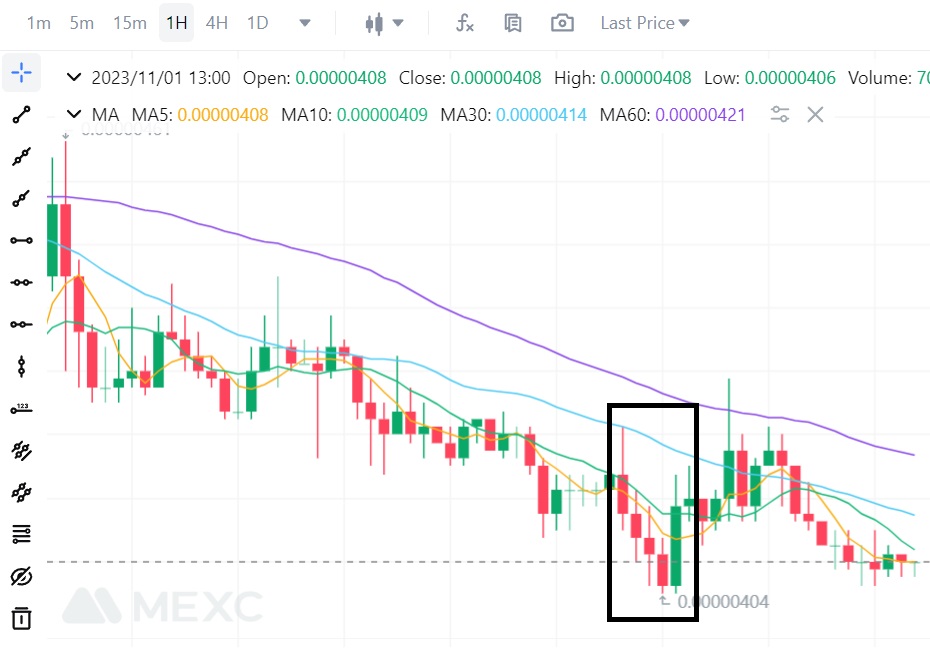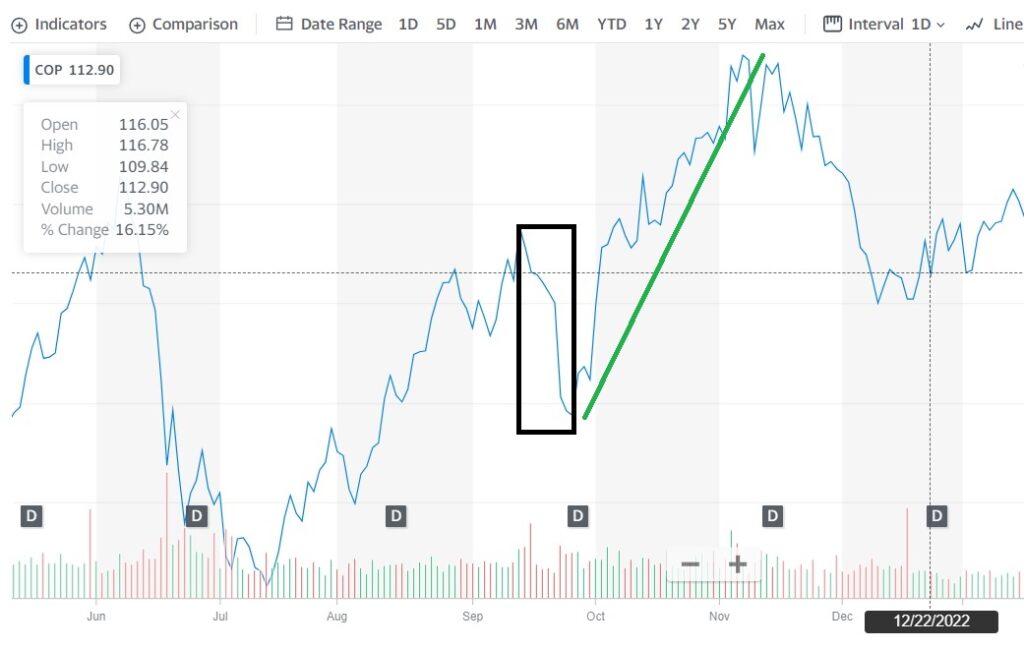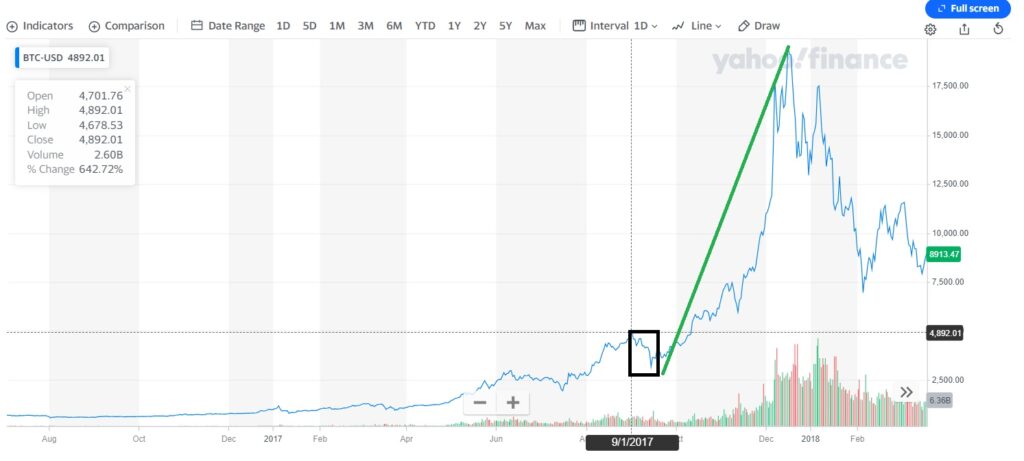The world of trading, whether stocks or crypto, is rife with patterns and terminologies. Among these, the bear trap stands out as a phenomenon that has both baffled and intrigued traders for decades. But what exactly is it, and how can traders navigate its treacherous waters?
Table of Contents
What is a Bear Trap?

Definition and Overview
A bear trap is a deceptive maneuver in the trading world. It’s a situation where the price of a stock or cryptocurrency seems to be on a downward trajectory, signaling to traders that it might continue to drop. Acting on this apparent decline, traders may decide to sell their holdings to prevent further losses. However, contrary to these expectations, the asset’s price suddenly reverses and begins to rise. Those who sold their holdings, anticipating a further decline, are now “trapped” as they’ve potentially sold at a loss only to witness the price rebound.
The Mechanics Behind a Bear Trap
Several factors can contribute to the formation of a bear trap:
Market Sentiment
Often, widespread pessimism can lead to an initial drop in price. This collective sentiment can be based on recent news, global events, or even speculative behavior.
Technical Analysis Indicators
Sometimes, certain technical patterns might suggest a continuing downward trend, misleading traders. However, these patterns might not always account for sudden market changes or news that can reverse the trend.
Whale Movements
In the crypto world, large holders (often referred to as ‘whales’) can significantly influence price movements. A whale might sell a large portion of their holdings, causing a temporary price drop, only to buy back at a lower price, leading to a price surge.
The Psychology Behind the Bear Trap
Human emotions play a pivotal role in the formation and impact of bear traps. The fear of potential losses, coupled with the herd mentality of following market trends, can make traders more susceptible to such traps. When traders see a declining price, the instinctual response is to prevent further losses, leading them to sell. However, this panic selling can exacerbate the initial decline, only to be followed by a sharp reversal, catching many off guard.
Bear Trap vs. Bull Trap
While a bear trap gives the illusion of a declining market that suddenly reverses to an upward trend, a bull trap is its mirror image. In a bull trap, traders are misled into believing the market is on an upward trajectory, prompting them to buy. However, prices suddenly decline, trapping those who bought at the higher price.
Bear Trap Trading: Recognizing the Signs
The Anatomy of a Bear Trap
Recognizing a bear trap involves understanding its key components and the sequence in which they typically occur:
| Stage | Description | Key Indicators |
|---|---|---|
| Initial Decline | The asset starts to show a consistent decline in price. | – Decreasing price trend <br> – Negative news or events <br> – Increase in short-selling volume |
| Accelerated Selling | As the price continues to drop, more traders panic and begin selling their holdings. | – Rapid price drop <br> – High trading volume <br> – Widespread negative sentiment |
| False Bottom | The asset’s price seems to stabilize, giving an illusion that it has reached its lowest point. | – Brief stabilization in price <br> – Decrease in trading volume |
| Unexpected Reversal | Contrary to expectations, the asset’s price suddenly surges upwards. | – Sharp increase in price <br> – Positive news or events <br> – Decrease in short-selling volume |
Stock vs. Crypto: Are There Differences?
While the fundamental concept of a bear trap remains consistent across markets, there are nuances between traditional stocks and cryptocurrencies:
Volatility
Cryptocurrencies are inherently more volatile than most traditional stocks. This heightened volatility can lead to more pronounced and frequent bear traps in the crypto realm.
Market Hours
Traditional stock markets have set trading hours, while cryptocurrency markets operate 24/7. This continuous trading can lead to quicker formation and resolution of bear traps in crypto.
Information Flow
Cryptocurrencies can be significantly influenced by social media trends, influencers, and online forums. A single tweet or post can sometimes trigger market movements, leading to potential bear traps.
Common Mistakes Traders Make
Falling into a bear trap often stems from certain missteps:
Over-reliance on Technical Analysis
While technical analysis is a valuable tool, relying solely on it without considering fundamental factors can be misleading.
Herd Mentality
Following the majority without conducting personal research can lead traders straight into a bear trap.
Ignoring Market News
Overlooking significant market news or global events can result in traders being caught off guard by sudden market reversals.
The Bear Market Trap: A Deeper Perspective

What is a Bear Market?
A bear market is not just a fleeting moment of price decline; it’s a prolonged phase where the confidence of investors wanes, and pessimism takes hold. Specifically, a bear market is defined when there’s a drop of 20% or more from recent highs in broad market indices. This downturn is often accompanied by a general sense of gloom and a negative outlook on the economy.
Duration
Bear markets can last for months or even years. The duration is influenced by a myriad of factors, including economic indicators, global events, and investor sentiment.
Causes
Several elements can trigger a bear market, such as economic recessions, high unemployment rates, drops in consumer spending, or geopolitical instability.
How Does a Bear Trap Fit into a Bear Market?
Within the grim landscape of a bear market, bear traps are like mirages that give false hope. They appear as brief periods of recovery or stabilization, making traders believe that the market is finally rebounding. However, these are merely traps, and the market soon resumes its downward trajectory.
Deceptive Recoveries
During a bear market, any sign of recovery can be enticing. Bear traps play on this hope, presenting short-lived rallies that seem like genuine recoveries.
Impact on Traders
Those who buy into these false recoveries, thinking the worst is over, often find themselves trapped when the market plunges again. This can lead to significant financial and emotional distress.
Strategies to Navigate Bear Market Traps
While bear market traps are deceptive, they aren’t unbeatable. With the right strategies, traders can safeguard their investments:
Stay Informed
Regularly update yourself with market news, economic indicators, and global events. Being informed helps in making calculated decisions rather than impulsive ones.
Diversification
Don’t put all your eggs in one basket. Diversifying your investments across sectors or asset classes can reduce the risk of significant losses.
Long-term Perspective
Instead of getting swayed by short-term market movements, adopt a long-term investment perspective. This approach can help in weathering the storms of bear market traps.
Real-life Case Studies: Bear Traps in Action
Historical Bear Traps in the Stock Market
Bear traps have been a recurring theme in stock markets throughout history. They often manifest during times of uncertainty, where market sentiment is easily swayed by external factors.
ConocoPhillips Case

In a notable instance involving ConocoPhillips’ stock, the price was on an upward trend for several months. However, in September 2022, it experienced a rapid decline. This downturn lasted for about 9 days, prompting many traders to take short positions, anticipating further decline. But, contrary to their expectations, the stock rebounded to its previous price level and continued its ascent. Traders who hadn’t placed stop orders or taken protective measures found themselves caught in this bear trap.
Cryptocurrency Bear Traps: A New Age Challenge
The volatile nature of cryptocurrencies makes them a fertile ground for bear traps. With the influence of social media, rumors, and rapid news dissemination, crypto markets can exhibit sharp price movements in short time frames.
Bitcoin’s 2017 Surge

During the historic bull run of Bitcoin in 2017, there were multiple instances where the price seemed to be correcting, only to rebound even stronger. For instance, in September 2017, Bitcoin’s price dropped from around $4,800 to $3,100, leading many to believe that the bull run was over. However, this was a bear trap, as the price quickly rebounded and soared to nearly $20,000 by mid-December.
Ethereum’s 2018 Rollercoaster
Ethereum, another major cryptocurrency, experienced a similar bear trap in early 2018. After reaching an all-time high of over $1,400 in January, it faced a sharp decline to around $600 in April. Many traders believed this was the beginning of a prolonged bear market for Ethereum. Yet, by May, Ethereum had rebounded to over $800, catching many off guard.
Ripple’s XRP and the Late 2020 Movement
XRP, the native cryptocurrency of the Ripple network, saw a significant bear trap in late 2020. After facing a lawsuit from the U.S. Securities and Exchange Commission, XRP’s price plummeted. Many traders sold their holdings, anticipating further decline. However, in the subsequent months, XRP saw a resurgence, leading to substantial gains for those who held on or bought during the dip.
Conclusion
In the intricate tapestry of trading, patterns like the bear trap stand out as both challenges and learning opportunities. Whether in the realm of traditional stocks or the dynamic world of cryptocurrencies, bear traps serve as stark reminders of the market’s unpredictability. They underscore the importance of comprehensive research, continuous learning, and the perils of trading based solely on emotion or herd mentality.
The journey through the history and mechanics of bear traps, coupled with real-life case studies, paints a vivid picture of their impact. From the deceptive lulls in bear markets to the sudden reversals in stock and crypto trading, bear traps have left indelible marks on many traders’ portfolios. However, with the right strategies and a keen eye for market indicators, traders can navigate these treacherous waters.
As the world of trading continues to evolve, so too will the patterns and challenges traders face. But one constant remains: the value of knowledge. Understanding phenomena like bear traps equips traders with the tools to make informed decisions, turning potential pitfalls into opportunities for growth and success.
In the end, bear traps are not just about recognizing a specific market pattern; they’re about understanding the broader dynamics of trading, the psychology of traders, and the ever-present interplay of risk and reward.
FAQs
What exactly is a bear trap in trading?
A deceptive market movement where a declining asset reverses direction, trapping traders who acted on the initial decline.
What is a bear trap in stocks?
A bear trap in stocks occurs when the price of a stock appears to be on a downward trend, prompting traders to sell or short-sell, only to have the stock suddenly reverse and move upward. This unexpected reversal can result in losses for those who acted on the initial decline.
How can I avoid falling into a bear trap?
Stay informed, diversify your portfolio, and consider using stop-loss orders.


